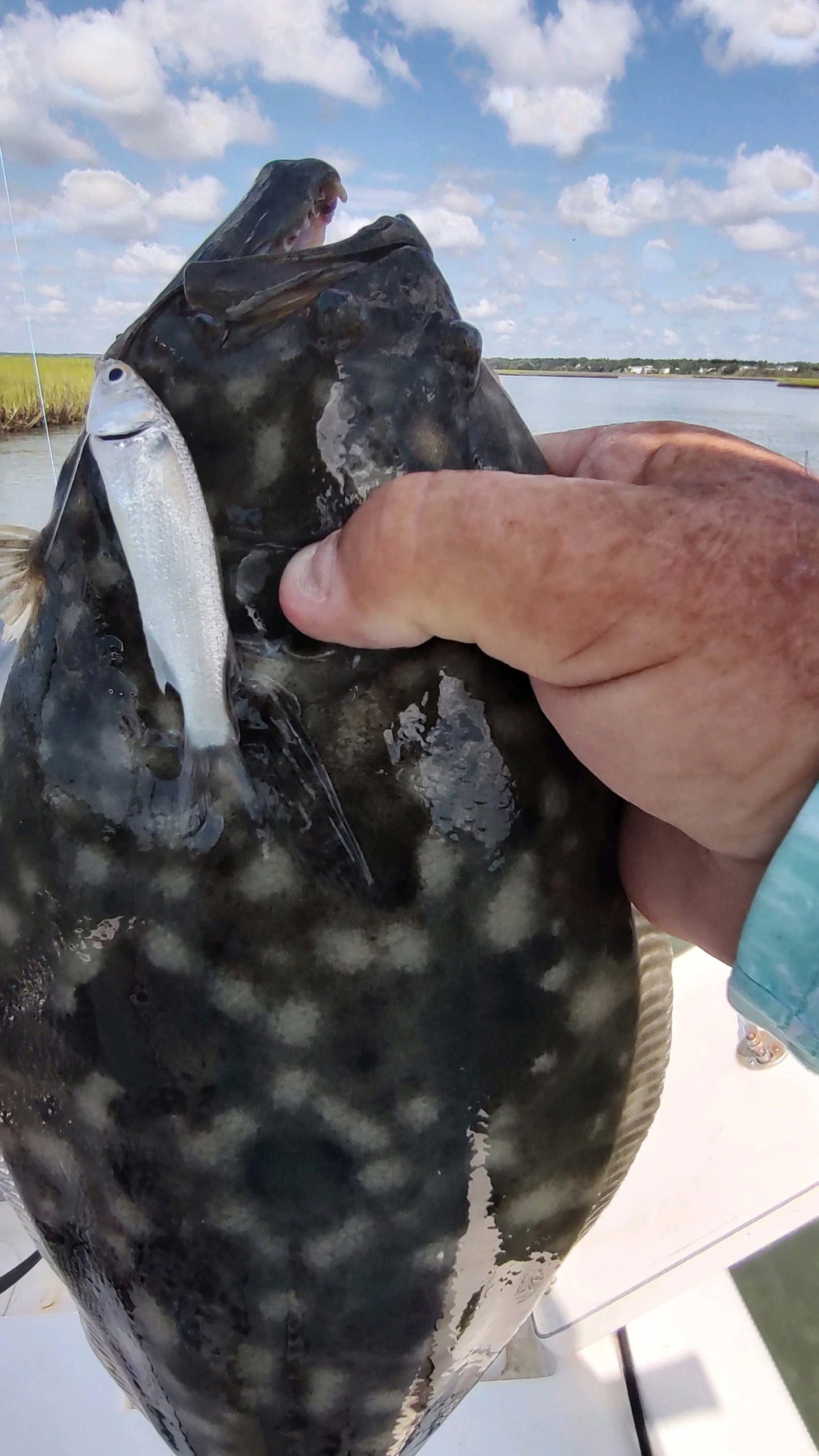
Using this bait will result in more productive outings.
“To the right and fifty feet ahead,” I loudly directed my girlfriend at the steering wheel. “Just a little further then cut it.”
We were chasing finger mullet in my 18-foot G3 triple wide aluminum Jon boat. I was standing on the bow platform, cast net loaded and ready to fire. She was steering me toward the schools of bait that quickly zoomed just under the surface.
“What? I can’t hear you,” she hollered back. “Where do you want me to go because I can’t see them or hear you.”
The year was 2002, the noisy two stroke was close to the steering wheel and the girlfriend is now my wife. Since a ring went on her finger in 2005, I don’t think she’s helped in the mullet process again. It can be frustrating, but when completed, well worth it.
Finger mullet move into Northeast waters in July and August thus adding an additional bait option to both inshore and offshore anglers. Despite making a showing in July, it’s really August through October that they are available in sizes that range from 4 to 7 inches. Mullet are most often found cruising in small schools along the sod banks and contours of just about any waterway. Because they swim high in the column, they can be detected by their wake. Anglers have to use stealth in order to get close enough to launch a cast net in their direction. Mullet have fantastic eyesight and will quickly dart away when they see a predator, in this case, us fishermen! Furthermore, their sight and awareness help them find any holes in the cast net. So unlike the seemingly oblivious peanut bunker that capture easily, mullet will make a beeline for any escape routes possible. Once the net is tossed, anglers should only wait several Mississippi’s before rearing back and closing off exit. The mullet will try to swim out and under.
Some of the best strategies don’t include chasing. Rather, anglers can outsmart the mullet by taking posts along the bank. Mullet will cruise up and down shorelines with the tide. This occurs from the back bay to the inlet to the beach so standing or squatting low to the ground and pouncing with the cast net, works wonderfully. For those without a vessel, this goes without saying, but for those that intend to do this by boat, nosing the boat into the sand or sod and then walking the contours is effective.
Once caught, a livewell is the best way to keep mullet alive; however, an aerated bucket does an adequate job. The biggest annoyance includes mullet jumping out of the well or bucket. They easily jump a couple feet and your whole supply of bait ends up on the deck or ground. A lid is most certainly a requirement! Mullet will live the length of an outing as long as the bait container is circular or ovular otherwise they will become red-nosed and die much more quickly.
On the fishing grounds, tuna love to inhale a mullet sent deep and under a balloon. And mahi won’t ignore a smaller bait tossed their way. But a mullet’s real value comes with fluke and striped bass. Fluke, both inshore and off, love finger mullet. Anglers can expect larger, keeper-size fluke when using a decent-sized mullet. Even on the wrecks and rubble where anglers are using synthetic baits or bucktails, mullet sent to the bottom will catch less in terms of numbers, but the size of fluke will make up for the decrease in strikes. Mullet are tournament bait.
Striped bass are keen to the movements of mullet in the Northeast and can be seen boiling and exploding on the migration. In August and September, this takes place in the skinny waters, but as the full and new moons pass, the mullet will move into the major channels and inlets before flushing out along the beach front. Their schools will gain in numbers and one throw of an 8- to 10-foot net will load up. Anglers that find mullet pinned against jetties and groins have tremendous success tossing plugs for bass at dawn, dusk and in the dark.
If a major weather bomb, like a tropical storm or huge nor’easter shows up late in their migration, they’ll all move south by the time anglers hit the fishing scene on their next outing. Mullet only enter minnow traps by accident and very few tackle shops specialize in carrying live mullet, therefore cast net skills are at a premium. But it’s worth the time and effort when you are often the only one on the fishing grounds with this all-world offering.




